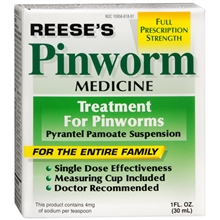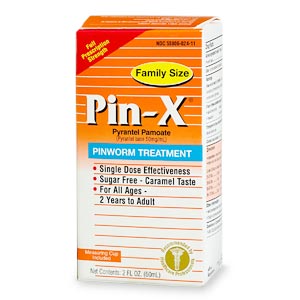Pinworm Infection (Enterbiasis)
What is a pinworm?A
pinworm ("threadworm") is a small, thin, white roundworm that sometimes
lives in the colon and rectum of humans. Pinworms are about the length of a
staple. While an infected person sleeps, female pinworms leave the intestine
through the anus and deposit their eggs on the surrounding skin.
Symptoms:
Pinworm infection causes itching around the anus which can lead to
difficulty sleeping and restlessness. Symptoms are caused by the female
pinworm laying her eggs. Symptoms of pinworm infection usually are mild and
some infected people have no symptoms.
Infection spread?Pinworm
infection is spread by the fecal-oral route, that is by the transfer of
infective pinworm eggs from the anus to someone’s mouth, either directly by
hand or indirectly through contaminated clothing, bedding, food, or other
articles.
Pinworm eggs become infective within a few hours after being deposited on
the skin around the anus and can survive for 2 to 3 weeks on clothing,
bedding, or other objects. People become infected, usually unknowingly, by
swallowing (ingesting) infective pinworm eggs that are on fingers, under
fingernails, or on clothing, bedding, and other contaminated objects and
surfaces. Because of their small size, pinworm eggs sometimes can become
airborne and ingested while breathing.
Co-bathe with siblings?
During this treatment time and two weeks after final treatment, it is a good
idea to avoid co-bathing and the reuse or sharing of washcloths.
Did my pets give me pinworms …. NO
How is it diagnosed?
Itching during the night in a child’s perianal area strongly suggests
pinworm infection. Diagnosis is made by identifying the worm or its eggs.
Worms can sometimes be seen on the skin near the anus or on underclothing,
pajamas, or sheets about 2 to 3 hours after falling asleep. Pinworm eggs
can be collected and examined using the “tape test” as soon as the person
wakes up. This “test” is done by firmly pressing the adhesive side of clear,
transparent cellophane tape to the skin around the anus. If the child
wakes up in the night, look around the anus with a flashlight and look for
small white worms.
Treatment?
Pinworm can be treated with over-the-counter medications. Reese’s Pinworm
Medication and Pin-X can be purchased without a prescription. Treatment
involves two doses of medication with the second dose being given 2 weeks
after the first dose. All household contacts and caretakers of the infected
person should be treated at the same time. Reinfection can occur easily so
strict observance of good hand hygiene is essential (e.g. proper handwashing,
maintaining clean short fingernails, avoiding nail biting, avoiding
scratching the perianal area). Daily morning bathing and daily changing of
underwear helps removes a large proportion of eggs. Showering may be
preferred to avoid possible contamination of bath water. Careful handling
and frequent changing of underclothing, night clothes, towels, and bedding
can help reduce infection, reinfection, and environmental contamination with
pinworm eggs. These items should be laundered in hot water, especially after
each treatment of the infected person and after each usage of washcloths
until infection is cleared.

